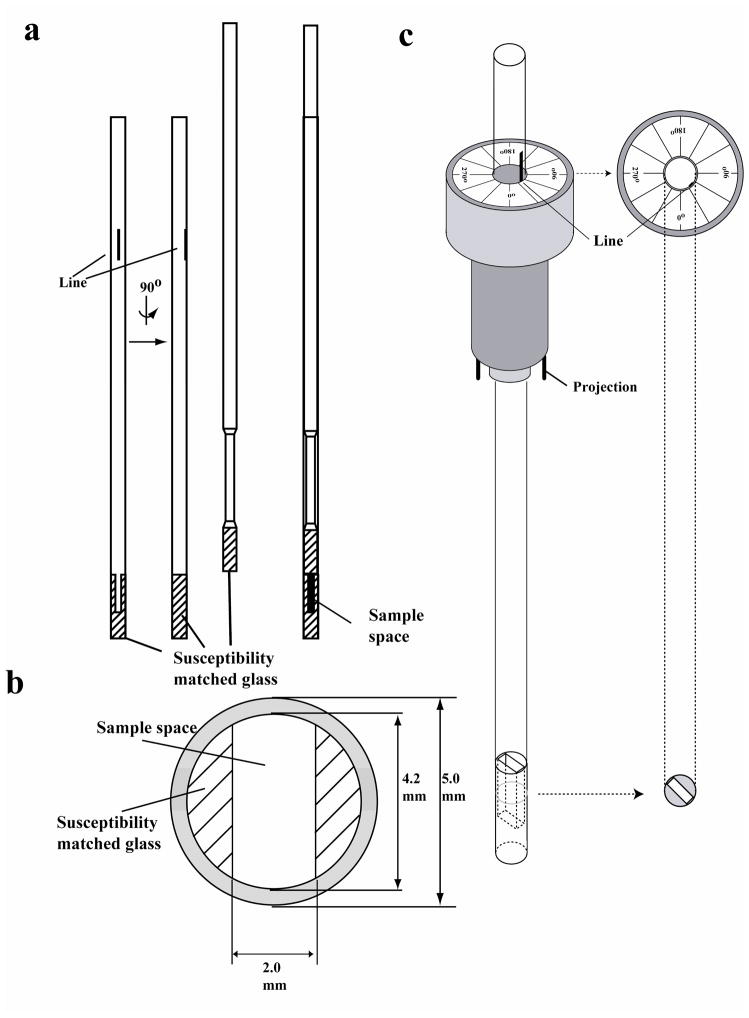Figure 1. Design of the slot tube.
The slot tube is composed of an outer tube and a plunger (a). In the outer tube, the bottom beneath the sample space is filled with susceptibility matched glass. Above it, two segment-shaped susceptibility matched glass pieces create a quasi-rectangular sample space (b). The sample cavity is covered by the plunger made of susceptibility matched glass. In the present study, the sample space was 2.0 mm in width and 20 mm in height, but these dimensions can be changed to alter the sample volume. A sample positioning unit (Bruker BioSpin) serves to orient the sample cavity in the NMR probe. The tailored sample holder has two projections in its bottom that insert into holes in the top of the probe. The top of the spinner is labeled with angle relative to the B1 field and A line on the side of the tube marks the long axis of the slot, and the tube is rotated to align this line with the desired angle mark on the top of the sample holder (c).

